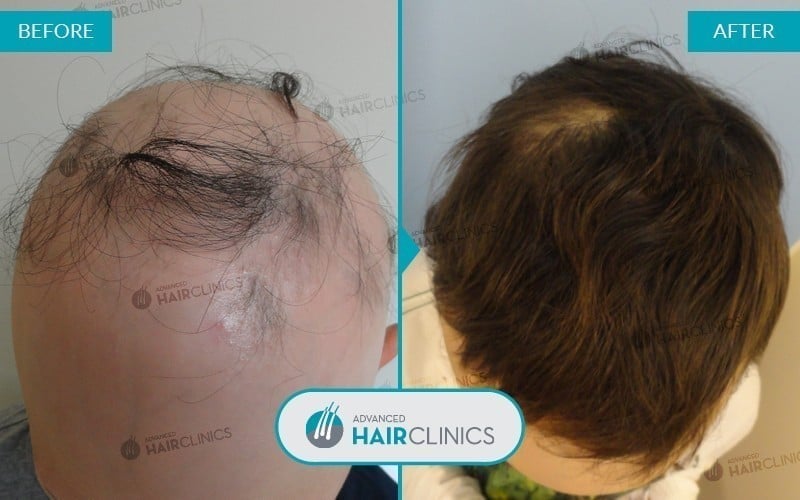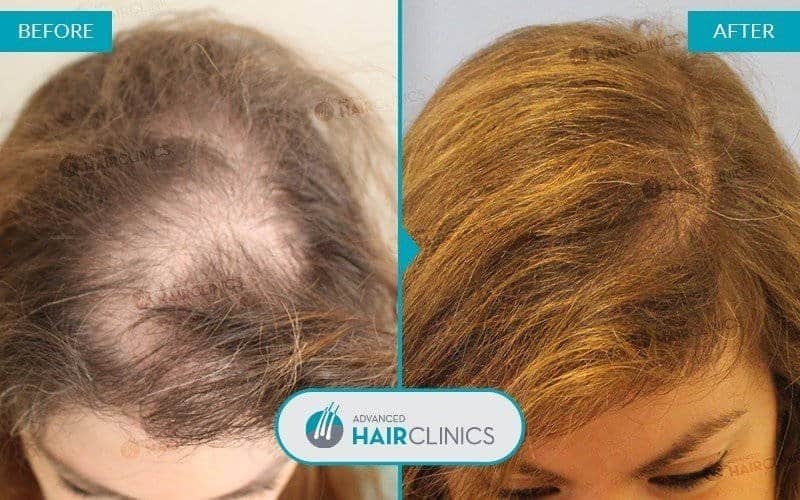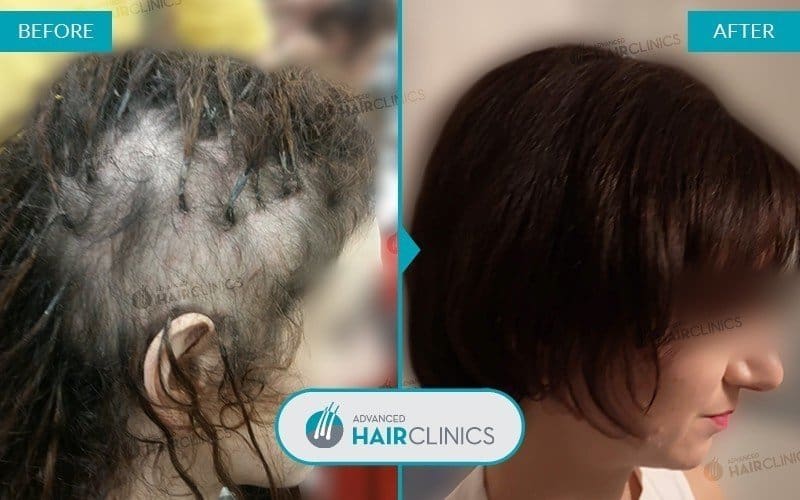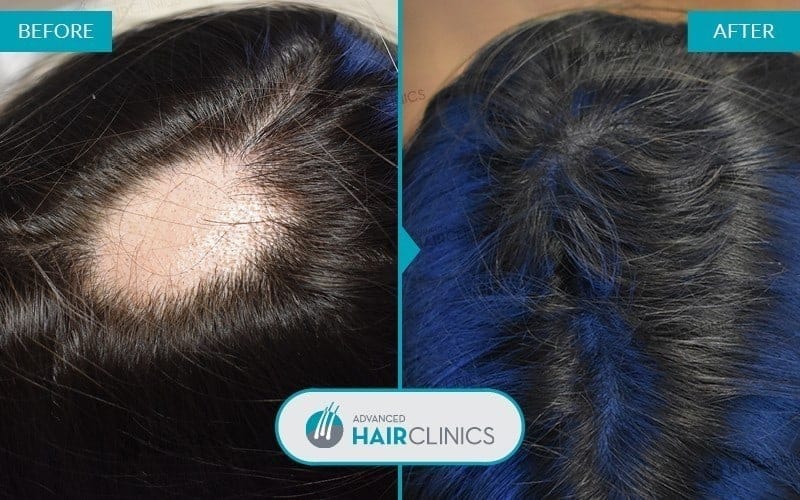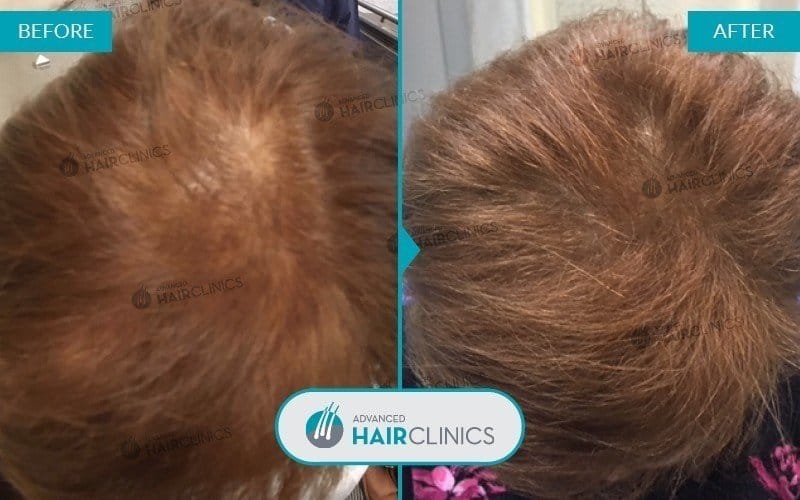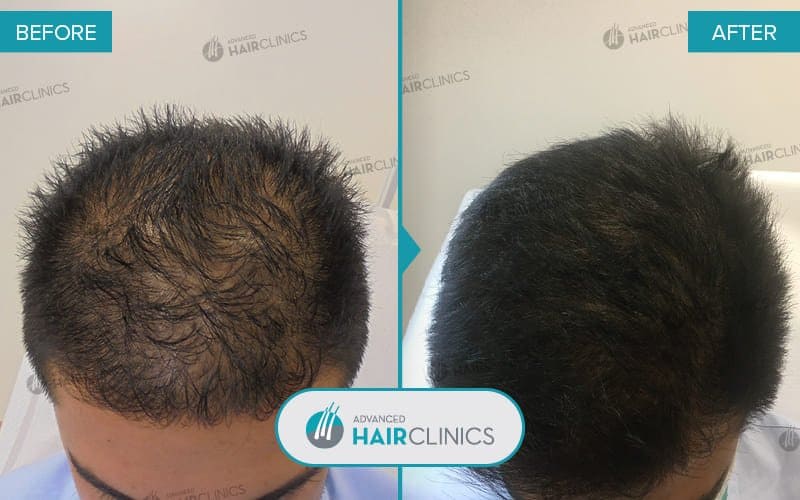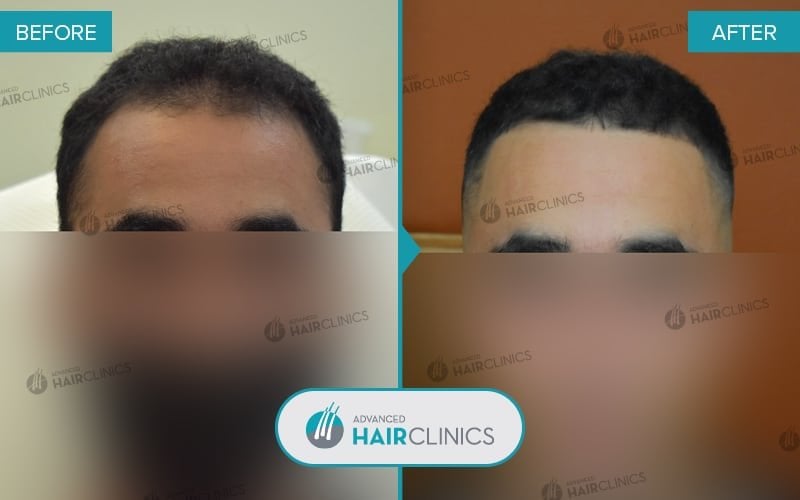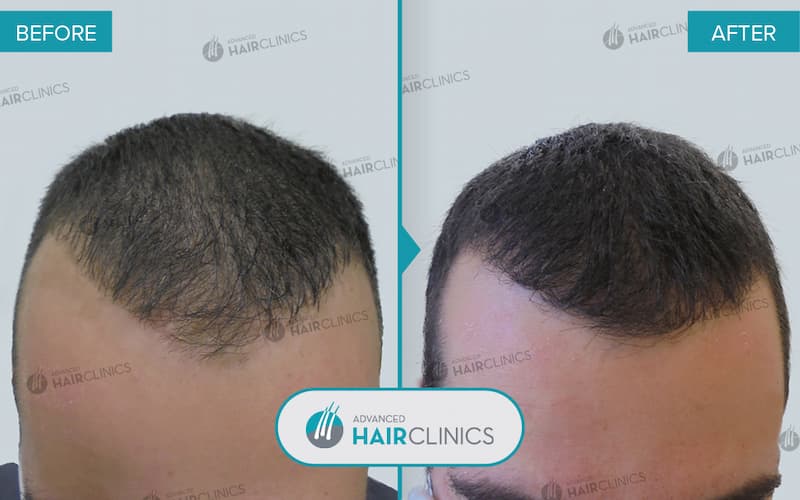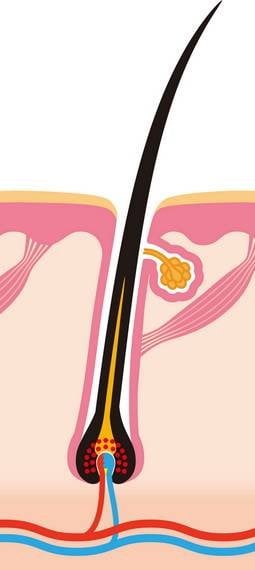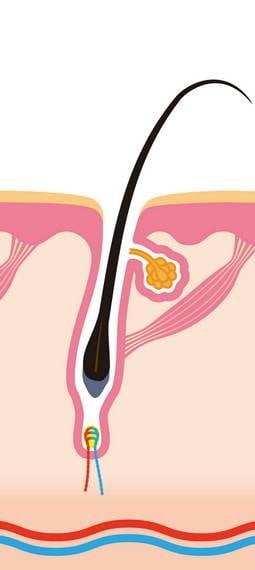Diffuse Alopecia
Diffuse alopecia is characterized by noticeable thinning of the hair and is more common in women and less common in men.
Although a reduction in hair density can cause anxiety, lower self-confidence and affect personal, professional and social life, it is important to know that there are effective treatments available today that can restore healthy, luscious hair.

DIFFUSE ALOPECIA
Effective treatments
Autologous Growth Factors – PRP
Autologous PRP hair mesotherapy with growth factors has been tested in cases of diffuse alopecia and is currently used with excellent results together with supportive or drug treatment. The treatment can be repeated every month until the hair growth of the affected area is sufficiently restored. Each session lasts approximately 30-45 minutes and does not require local anaesthesia.

With minoxidil
Minoxidil in a 2% or 5% solution topically on the scalp twice a day can help mainly in chronic diffuse alopecia and has very good results in both male and female androgenetic alopecia.
Hair loss treatment with minoxidil is one of the few drug treatments with proven results in hair loss and hair thinning and has been used safely worldwide for the last 20 years.

RESULTS
Treatments for hair loss & Hair transplantation
Diffuse alopecia – Types
WHAT IT IS
The life cycle of hair
The hair life cycle consists of the anagen, catagen and telogen phases. Female hair loss occurs when there is a rapid transition from the anagen phase to the catagen phase and then to the telogen phase.
In the scalp, 95% of the hair is in the anagen phase, which lasts several years, while the catagen and telogen phases last a few months. In some forms of female hair loss, the anagen phase lasts only a few months. A daily loss of 100-150 hairs is normal and does not constitute female pattern hair loss.
The loss of these catagen hairs occurs mainly during shampooing and combing and does not necessarily indicate female pattern hair loss. A woman should seek hair loss treatment if she loses more than 150 hairs per day.
-

1. Anagen phase
-

2. Catagen phase
-

3. Telogen phase
DIFFUSE ALOPECIA
Common causes
Telogen Effluvium
Hair prematurely and abruptly enter the telogen phase (the last stage of their life), whereas, normally, hair should remain in the anagen phase for about three months, until the new hairs have developed, and then fall out.

Anagen or Dystrophic Alopecia
Intense shedding of hair occurs (up to 90%) due to the effect of a chemical or toxic agent (e.g. chemotherapy) or radiation; the hair will grow back when the exposure to the agent is discontinued.

Mixed Alopecia
The factors that are responsible for alopecia, affect hair follicles differently. This implies that in a number of hair follicles the anagen phase ends prematurely, whereas in a number of hair follicles growth stops despite being in the anagen phase.

